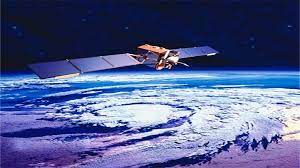Monitoring Desk
FLORIDA: The extraordinary development comes after NASA last month launched its Psyche spacecraft complete with an experimental optical communication system to investigate an asteroid.
NASA’s Deep Space Optical Communications (DSOC) experiment has now successfully beamed test data back to Earth using near-infrared lasers.
The Psyche craft was nearly 10 million miles from Earth, about 40 times the distance between Earth and the moon, when it returned the message.
NASA said in its announcement: “This is the farthest-ever demonstration of optical communications”.
Speaking from NASA’s Jet Propulsion Laboratory, DSOC project technologist Abi Biswas said the primary objective of the system was to give future NASA missions “the tools for returning data at much higher rates”.
DSOC project manager Bill Klipstein explained: “The signals travel at the speed of light, so they come just as fast as they do for the microwaves, but you could send more data in the same time of a pass for the same spacecraft resources.
“The notion of being able to communicate to have video to astronauts on Mars is actually part of the vision that NASA has for optical communications.”
The DSOC experiment involved an observatory near Wrightwood, California emitting a laser beam into the sky which the Psyche craft received and used as a pointing reference to direct a laser back to Earth.
A second observatory in San Diego County received and decoded the signal, which was comprised of particles of light also known as photons.
DSOC’s near-infrared photons took about 50 seconds to travel from Psyche to Earth during the test on November 14, but will take about 20 minutes to travel back at Psyche’s farthest distance from Earth.
NASA Jet Propulsion Lab team lead Meera Srinivasan said: “Tuesday morning’s test was the first to fully incorporate the ground assets and flight transceiver, requiring the DSOC and Psyche operations teams to work in tandem.
“It was a formidable challenge, and we have a lot more work to do, but for a short time, we were able to transmit, receive, and decode some data.”
Last week’s test was the first time optical communication was demonstrated beyond the moon.
NASA said in its statement: “The DSOC experiment aims to demonstrate data transmission rates 10 to 100 times greater than the state-of-the-art radio frequency systems used by spacecraft today.
“Both radio and near-infrared laser communications utilise electromagnetic waves to transmit data, but near-infrared light packs the data into significantly tighter waves, enabling ground stations to receive more data.”
Its success means future spacecraft could send higher-quality images to Earth, and maybe even stream video, from deep space.
Psyche will continue beaming lasers as part of a “two-year technology demonstration” as NASA attempts to receive laser signals from an ever-increasing distance.
The spacecraft is expected to reach the asteroid 16 Psyche in 2029 and will then proceed to orbit.







